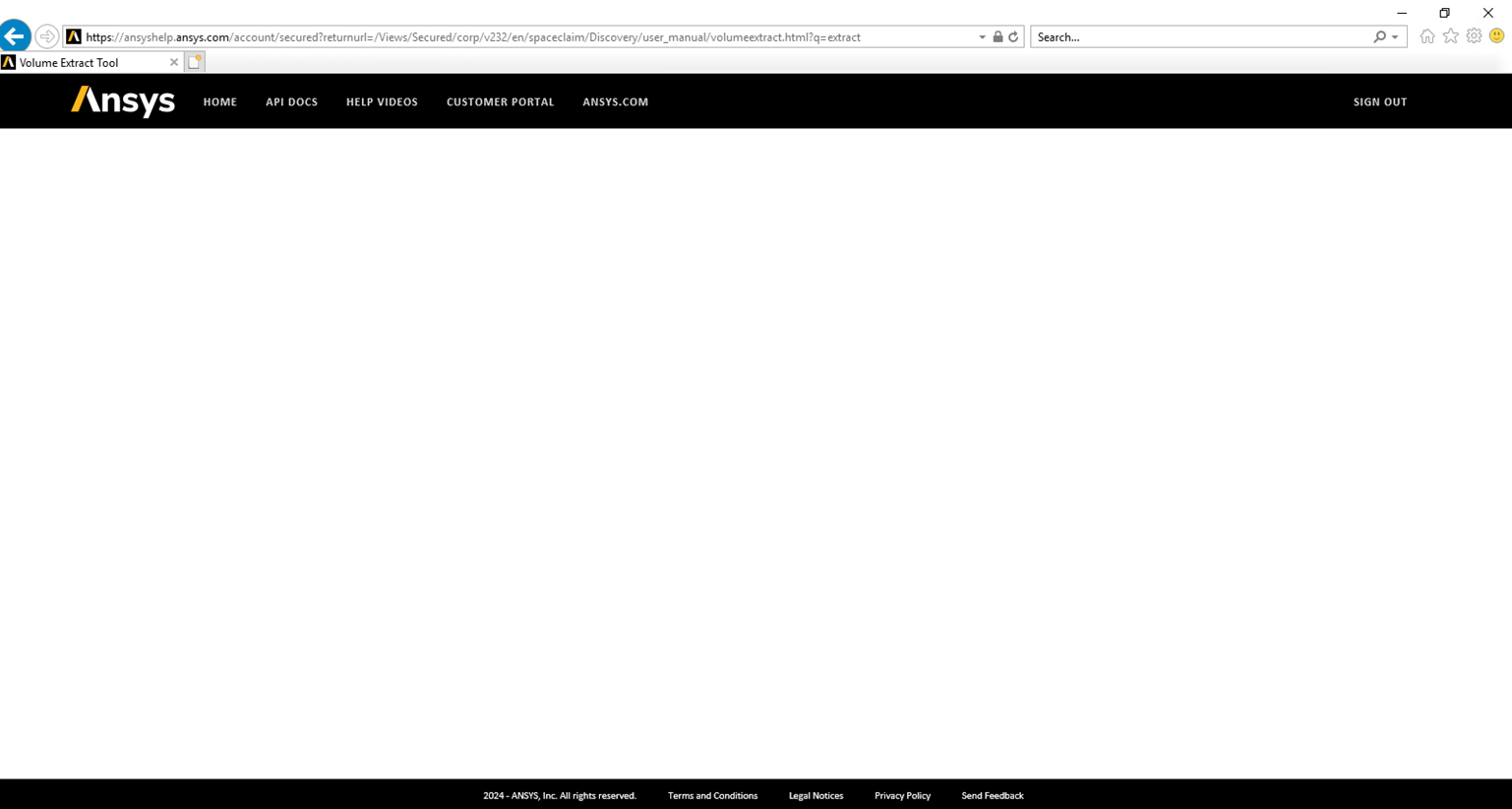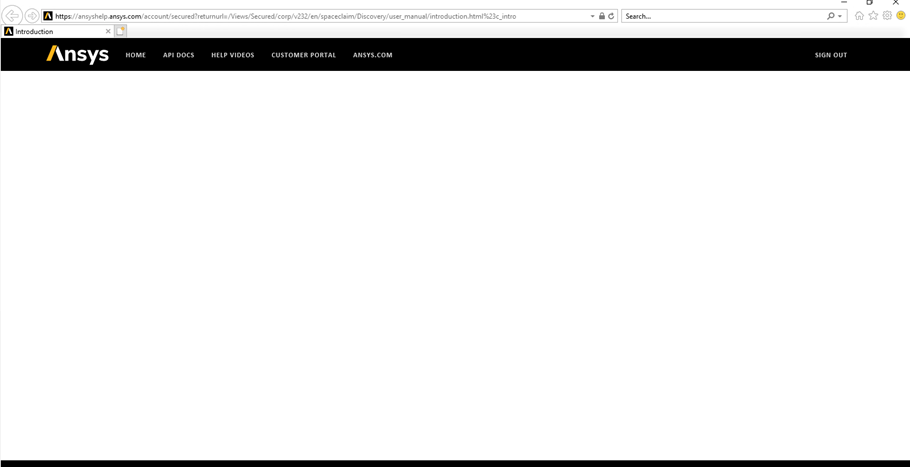-
-
February 19, 2024 at 10:27 pm
dungnguyenxuan199566
SubscriberHi everyone,
Does anyone know how to make an inlet into this region?
I am trying to simulate human airway inhalation.
I am trying to make an inlet for this model but as you can see, the inlet is not normal shape and hard to select as inlet layer.
Besides, if you ever made human airway simulation, please share your workflow and experience. I really appreciate it.

-
February 20, 2024 at 3:53 am
Essence
Ansys EmployeeHello,
I would suggest you to please go through the Ansys tutorials:
/courses/index.php/courses/3d-bifurcating-artery-steady/
/courses/index.php/courses/fluent-3d-bifurcating-artery/
-
February 20, 2024 at 11:03 pm
dungnguyenxuan199566
SubscriberHi Essence,
Thank you very much for the tutorials. However, in the links that you have posted, the authors skip the making inlet step. As you see, my object does not have a flat surface inlet as in the tutorials. I wonder if is there any way to add an object or add a surface there so that it will serve as an inlet area for my object
-
-
February 20, 2024 at 11:02 pm
dungnguyenxuan199566
SubscriberThank you very much!
-
February 21, 2024 at 7:15 am
Essence
Ansys EmployeeHello,
The image you shared, is this the fluid domain? Did you extract the fluid domain successfully?
-
February 21, 2024 at 3:28 pm
dungnguyenxuan199566
SubscriberHi,
No, not yet. What does it mean? and How can I do that?
-
-
February 21, 2024 at 4:38 pm
Essence
Ansys EmployeeYou need to first extract the fluid domain in SCDM or Discovery and then mesh the fluid domain. Then this mesh needs to be imported to the Fluent solver. However, you can also extract the volume in Fluent mesher. I would recommend you to go through the AIC courses which demonstrate the same.
For more information, please refer the Ansys guide link:
https://ansyshelp.ansys.com/account/secured?returnurl=/Views/Secured/corp/v232/en/spaceclaim/Discovery/user_manual/volumeextract.html?q=extract
https://ansyshelp.ansys.com/account/secured?returnurl=/Views/Secured/corp/v241/en/flu_ug/tgd_user_workflow_guided_tasks_capping.html?q=enclose%20caps
-
February 21, 2024 at 7:34 pm
dungnguyenxuan199566
SubscriberHi Essence,
Thank you for your kind help. I wonder if you can share student links for me.
I am using student version and does not have account number.
Thank you!
-
-
February 21, 2024 at 7:43 pm
Essence
Ansys EmployeeIf you are unable to access the link, follow this Forum discussion /forum/forums/topic/using-help-with-links/#latest
-
February 21, 2024 at 8:07 pm
-
-
February 21, 2024 at 8:13 pm
Essence
Ansys EmployeeWhich version of Ansys are you using?
-
February 21, 2024 at 8:15 pm
dungnguyenxuan199566
SubscriberHi,
Mine is Fluent 2023 R2.
-
-
February 21, 2024 at 8:19 pm
Essence
Ansys EmployeeCould you please check again using the Forum discussion steps? Check if the Windows has blocked the links from opening as a firewall.
-
February 21, 2024 at 8:28 pm
dungnguyenxuan199566
SubscriberHi,
It seems like the web browser does not block any website. Is there any way I can change the default web browser open by Fluent to try on Chrome?
-
-
February 21, 2024 at 8:35 pm
Essence
Ansys EmployeeHang on. I will get back on this.
-
February 21, 2024 at 8:53 pm
dungnguyenxuan199566
SubscriberHi Essence,
Thank you very much for your kind help. I am looking forward to hearing from you.
Besides, is volume extracting this step (picture below)? If yes, my whole object is defined as a single regions only. How can I separate my object into multiple regions (like inlet, body, etc.) for my purposes?
-
-
February 22, 2024 at 10:37 am
Essence
Ansys EmployeeCould you try this link:
/forum/forums/topic/how-to-access-the-ansys-online-help/
-
February 22, 2024 at 3:33 pm
-
-
February 22, 2024 at 4:43 pm
Rob
Forum ModeratorCan you edit the stl in the original software to just leave you with the vessel walls? When I did the lung models I adjusted the stl before going into the Ansys tools.
-
February 22, 2024 at 5:13 pm
dungnguyenxuan199566
SubscriberHi Rob,
Would you please explain more clearly? I did make it hollow as you see in the picture with open mouth for inlet air.
-
-
February 22, 2024 at 5:21 pm
Rob
Forum ModeratorWhen I did it the last time, I trimmed the inlet (top) and ends of the 4th level branches to leave me with a single surface with one large & several small holes. I then capped those in the geometry/meshing tool of the time and went from there.
Same approach was used when I did the pulmonary artery example that finished up in Fluent News (before Ansys bought the company). Spring 2003 edition.
-
February 22, 2024 at 5:54 pm
dungnguyenxuan199566
SubscriberHello Rob,
Thank you for your explanation. Would you mind explaining in more detail in this step " capped those in the geometry/meshing tool"?
I think this is the step where I am stuck in. That would be great if you could attach some pictures. When I import my stl file in fluent mesh, it shows as one single object and I cannot select the inlet (top). What I did was:
1, Open workbench, select, geometry, then import stl file.
2, Select edit in Spaceclaim, in the Spaceclaim, I select autofix in facets tools.
3, Then, I move it to fluent mesh.
but in the fluent mesh, I could not select inlet regions for capping (as inlet), please find pictures below.
-
-
February 23, 2024 at 10:06 am
Rob
Forum ModeratorYou currently have a solid zone that is the lung wall. When I did the work I trimmed the geometry to have a single shell surface with holes where I wanted the flow. These were capped & labelled so when moving to TGrid (now Fluent Meshing) I had zones for wall, inlet & 8-16 outlets. Much mucking about was then done as the tools have improved in the last 20+ years and 2 weeks later I had a tet mesh.
-
February 23, 2024 at 5:39 pm
dungnguyenxuan199566
SubscriberWould you please specify " trimmed the geometry to have a single shell surface with holes where I wanted the flow" and "capped & labelled" steps? Did you do this before exporting stl file or after you have stl file. And which software did you use to trim and capped, labelled the geometry? Is there anyway we can trim, cap, and label the stl file?
-
-
February 26, 2024 at 10:26 am
Rob
Forum ModeratorThe artery/lung you have looks to be a solid volume of the vessel wall, ie it has a thickness. In my model we had a single shell (surface not volume). I trimmed the ends off in Magics (Materialise product) to import just the wall into GAMBIT (very old Fluent pre-processor). I then capped the ends, remeshed and fixed the geometry with a mixture of GAMBIT and manual node repairs in TGrid (now Fluent Meshing). This took several weeks.
Your approach now may be to tidy the stl up in whatever you used to generate it (Magics or Simpleware [Synopsys product] would be my choices now except I don't have a licence), cap the ends in SpaceClaim and then mesh.
-
February 26, 2024 at 10:14 pm
dungnguyenxuan199566
SubscriberHi Rob,
I agree, mine is volume one. Can we do something like converting the volume solid one to a surface one?
-
-
February 27, 2024 at 9:06 am
aarshad.phd20smme
SubscriberHi Xuan Dung! What is the format of your geometry file?
-
February 27, 2024 at 4:59 pm
dungnguyenxuan199566
SubscriberHi,
Mine is STL file one.
-
-
February 27, 2024 at 9:45 am
Rob
Forum ModeratorTo convert you can throw away one of the main faces, but which one is up to you. Hence me suggesting looking at whatever software was used to generate the stl.
-
- The topic ‘Inlet generation needed/human airway simulation’ is closed to new replies.


- air flow in and out of computer case
- Varying Bond model parameters to mimic soil particle cohesion/stiction
- Eroded Mass due to Erosion of Soil Particles by Fluids
- Guidance needed for Conjugate Heat Transfer Analysis for a 3s3p Li-ion Battery
- I am doing a corona simulation. But particles are not spreading.
- Issue to compile a UDF in ANSYS Fluent
- Centrifugal Fan Analysis for Determination of Characteristic Curve
- JACOBI Convergence Issue in ANSYS AQWA
- affinity not set
- Resuming SAG Mill Simulation with New Particle Batch in Rocky

-
3867
-
1414
-
1241
-
1118
-
1015

© 2025 Copyright ANSYS, Inc. All rights reserved.


.jpg)









